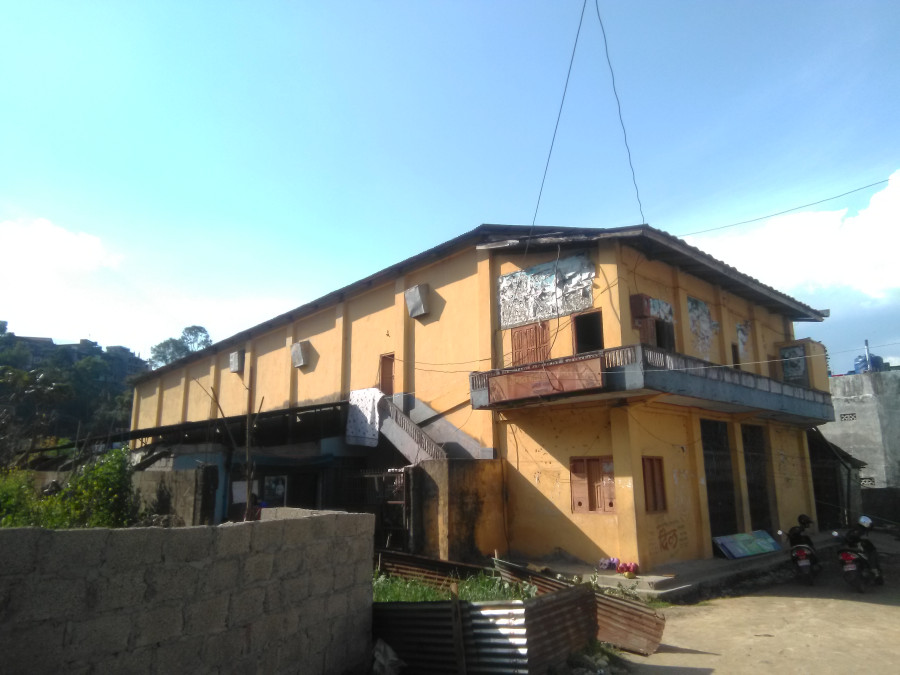Entertainment
The life and death of Syangja’s last, and only, film hall
Every Friday morning, the radio would blare ecstatically, announcing the screening of a new film at the bazaar’s only cinema hall: “Saugat Chalachitra Mandir Syangja ma… aaja dekhi, aaja dekhi chaliraheko chha, Nepali kathanak chalchitra…”
Timothy Aryal
Growing up on the outskirts of Syangja in the early aughts, radio was still the only means of entertainment. The ubiquity of television was still a few years away and the internet barely a blip. But every Friday morning, the radio would blare ecstatically, announcing the screening of a new film at the bazaar’s only cinema hall: “Saugat Chalachitra Mandir Syangja ma… aaja dekhi, aaja dekhi chaliraheko chha, Nepali kathanak chalchitra…”
But I hadn’t had a chance to visit the Saugat yet. One of my closest friends, Surendra, was an avid moviegoer and every time he saw a film, he would come back and narrate the story to us wide-eyed kids.
After several such sessions, one day, Surendra, another friend Sagar and I hatched a plan to bunk class and go watch a film. I don’t recall the film we saw but the images—huge, life-size, moving—remain indelible. I was equal parts excited and surprised. Perhaps as entertaining as the movie itself were the whistles from an excited crowd, as was the norm back then—first when the hero made his entrance, then several times when the villain was beaten, ruthlessly.
Much has changed in Syangja since. Surendra is married, Sagar is dead and I have moved away. The Saugat Chalachitra Mandir, where I watched my first film, doesn’t exist anymore. In fact, there are no cinema halls in all of Syangja.
Where the Saugat once stood, there is now a snooker house, operated, ironically, by Saugat, son of the owner and the man after whom the theatre was named. I asked him what had happened to the film hall, he scoffed, “There’s nothing newsworthy here.”
Nevertheless, he directed me to his father, Jumkaji Gurung, the man who once ran the Saugat.
About 50 metres away, Gurung was basking in the midday sun, reading the review of a recently-released film. Gurung, who is 53, now runs a grocery shop.
Gurung opened the Saugat in 1994 and ran it for 15 years before shutting it down in 2013. In that time, the hall screened over 500 films, screening three shows everyday—at 12pm, 3 pm and 6 pm.
It didn’t do well initially, says Gurung, just enough to recover the cost that went into renting film reels and projection. A Nepali film would only have about three to five reels back then, so it was only possible for a film to be screened concurrently in five halls. Films would come to the Saugat Chalchitra Mandir after a month since their release in the Capital. This being the 90s, only a few films were produced yearly, so business was limited. It was only after 1999 that film production picked up and so did Gurung’s business.

A wall painted with details of a Nepali film Dil at the entrance of Saugat Chalachitra Mandir.
But fortunes are fickle, and as young people began to leave the district in droves, seeking employment abroad, they sent back televisions. When more and more families had the luxury to watch films in the comfort of their own home, the Saugat began to suffer, Gurung says. By 2013, it was a shell of its former self.
There were other reasons behind the Saugat’s closure too. As cinema projection evolved, Gurung didn’t have the funds to adapt.
“I might have upgraded the system anyway, were it not for the lack of audience,” says Gurung. “Thousands of youth might have flown abroad and come back, but this district is still very conservative.”
Whenever a couple entered the cinema hall, it instantly became the talk of the town, says Gurung.
Gurung houses big dreams, of building a shopping mall in Syangja that will house a modern cinema hall. He is currently doing a market survey and looking for funds, he says.
But how exactly did Gurung, born and raised in Kaski, come to open a film hall in Syangja?
“Even though most of my friends went to become lahures, and my own father is a lahure, I wanted to pursue a different path,” says Gurung.
Two of his uncles had set up film theatres in Tanahun and Pokhara. Growing up, Gurung would moonlight as a ticket boy and later, as a manager at the now-defunct Tanahun-based theatre, Deepsikha Hall. That was when he witnessed the power of cinema—at the end of some films, most of the audience would be sobbing uncontrollably.
“They didn’t seem to know that what they had seen on screen was made up,” Gurung says. “I knew it was not real and this made me feel smart. But there are things that affect you even if you know they’re not real. Samjhana was one such film, and Maitighar, and Sapana.”
Sapana was the first film ever screened at the Saugat. And even though Kusume Rumal was a huge hit and ran for many weeks, Gurung says it was plagued with overacting.
“It felt good to see the audience coming out of the theatre satisfied and full of emotion,” Gurung says. “But it was also a drag, to rent the film, bring the bulky reel to the theatre and repair the projector when it stopped working.” Gurung relates an incident, one winter evening, when the projector stopped working during the 6pm show and he had to travel all the way to Gorakhpur, a 24-hour bus ride, to fix it.”
With the shutdown of Saugat Chalachitra Mandir, all of Syangja has been deprived of a cinema hall. The entire district, home to 280,000 people, has no film theatre. What, then, does this portend? A disinterest in the art of cinema or a lament for a bygone age in the time of laptops and personal televisions. For cinephiles like Surendra, there is nearby Pokhara—about two hours away—for a chance to sit in the dark of a theatre and watch a film come on.
In this age of rapid technological advance, much has changed for cinema since the death of the Saugat, with the advent of streaming sites like Netflix and the increasing quality and ubiquity of television dramas. Some in the West have even wondered if the rise of Netflix has sounded the death knell for cinema itself.
But the experiences of watching a film in a hall is incomparable. For you want, not just to be immersed in the story, but “to be kidnapped by the movie...to be overwhelmed by the physical presence of the image,” as the late American writer Susan Sontag wrote in her 1996 essay ‘The Decay of Cinema’. “To be kidnapped, you have to be in a movie theater, seated in the dark among anonymous strangers.”




 13.12°C Kathmandu
13.12°C Kathmandu










